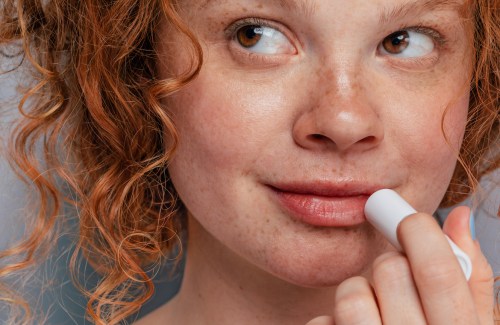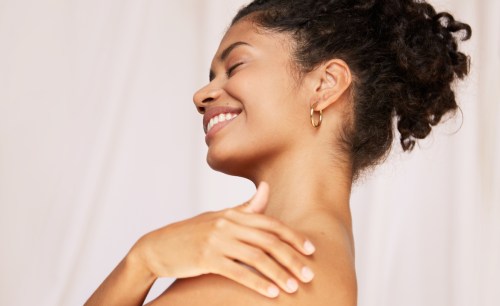Our editors independently select these products. Making a purchase through our links may earn Well+Good a commission
When your lips are so dry that it hurts to smile, lip balm is your sal(ve)ation—just as long as you use the right formula. Otherwise, your kissers might end up thirstier than they did before, which defeats the entire purpose of using a balm in the first place. That’s why dermatologists recommend lip balms for dry lips made with ingredients that impart and lock hydration into your pout, keeping it there long after your initial swipe.
Experts in This Article
board-certified dermatologist and founder of FACET Dermatology
double board-certified facial plastic surgeon and founder and lead facial plastic surgeon of the DeRosa Center Plastic Surgery and Med Spa
board-certified dermatologist at Schweiger Dermatology Group in New York
board-certified dermatologist at Schweiger Dermatology Group in New York
board-certified dermatologist at Idriss Dermatology, based in New York City
With so many options that promise to deliver the perfect kiss of moisture, searching for your lip balm BFF can be tricky. Fortunately, you don’t have to look far and wide to find “the one.” Below, dermatologists share everything you need to know about shopping for hydrating lip care and, better yet, their recommendations that they personally use themselves. Scroll to kiss dry lips goodbye for good.
The best lip balms for dry lips, at a glance:
- Best overall: Vaseline, Lip Therapy Balm, $7
- Best runner-up: Paula’s Choice, Hyaluronic Acid + Peptide Lip Booster, $33
- Best budget: Aquaphor, Lip Repair Ointment, $5
- Best lightweight: La Roche-Posay, Cicaplast Lip Balm B5, $10
- Best natural: Farmarcy, Honey Butter Beeswax Lip Balm, $12
- Best tinted: Kjaer Weis, Tinted Lip Balm, $35
- Best gloss: Rhode, Peptide Lip Treatment, $16
- Best with SPF: Cay Skin, Isle Lip Balm, $15
- Best with retinol: Verso, Lip Serum, $65
- Best for eczema: Marin, Lip Treatment, $18
- Best overnight: Tatcha, Kissu Lip Mask, $29
- Best lip balm alternative: Weleda, Skin Food Original Ultra-Rich Cream, $20
- Best flavored: Summer Fridays Lip Butter Balm, $24
- Best anti-aging: Naturium Phyto-Glow Lip Balm Clear, $10
- Best for sensitive lips: Avène Cicalfate Restorative Lip Cream, $18
- Best exfoliating: Eadem Le Chouchou Exfoliating + Softening Peptide Lip Balm, $24.00
How does lip balm help dry lips?
“The skin on our lips is some of the thinnest found anywhere on the body, and unlike the skin on the rest of our face, doesn’t have sebaceous glands, which means our lips need more care to stay nourished,” says Geeta Yadav, MD, board-certified dermatologist and founder of Facet Dermatology. Plus, our lips are at constant risk of losing moisture. Sun exposure, cold and dry air, dehydration, and bad habits like constant lip licking can contribute to your parchedness. Suffice to say, your lips need all the moisture and protection that they can get—and the best lip balms will be up to the task.
That said, there are some instances in which lip balms may not be sufficient in staving off dry lips. According to board-certified dermatologist Nava Greenfield, MD, if you notice that you have painful or itchy lips or skin, cracked corners, or if, despite using lip balm, your pout is dry for more than a week, it might be due to an underlying issue that you’ll want to address with a dermatologist.
Ingredients to look for
According to dermatologists, selecting an ideal option all comes down to the ingredients. For one, you’ll want to look for options formulated with humectants, like hyaluronic acid and glycerin, which draw water into your skin to deliver moisture to the skin barrier. Dr. Yadav also recommends looking for lip balms containing occlusives—petroleum, lanolin, shea butter, and squalane—that create a protective layer on the skin’s surface that seals and locks in moisture.
Keep in mind that you’ll want a lip balm that contains both humectants and occlusives if your lips are very dry. “Lip balms that only have ingredients that draw moisture—humectants—but don’t have ingredients that prevent the evaporation of the moisture can trigger a vicious cycle: water is being drawn into the skin, then evaporated,” says board-certified dermatologist Rachel Nazarian, MD, FAAD. “This makes you more dependent on the lip balm to replace the hydration.” The same applies, conversely, to lip balms containing occlusives and no humectants. “If you just apply occlusives to dry lips, you’ll just be trapping in dryness,” says Dr. Yadav.
In addition to these ingredients, Dr. Greenfield recommends selecting an option with emollients, which work to soften and smooth the lips while helping to repair the lip skin barrier; prime examples of emollients include butters, oils, lipids, and fatty acids. Together with humectants and occlusives, you’ll have a winning formula that helps to moisturize and repair even the driest of pouts.
Ingredients to avoid
Everyone reacts differently to ingredients, but if you want a lip balm that stands the best chance of not drying your lips even further, Dr. Greenfield and Dr. Nazarian both suggest avoiding formulas containing alcohol and fragrances, as both can be irritating, especially when your lips are already dry. “I’d avoid anything using camphor or menthol,” adds Dr. Yadav. “These ingredients are often used in medicated lip balms because they have a cooling effect, but they can also be irritating or drying.”
As you shop, consider your personal preferences, too. You will find lip balms that come in clear or tinted formulas, in several formats like sizable jars and sticks and squeeze tubes that allow for mess-free application, and with additional benefits, like SPF to provide UV protection or antioxidants to protect against free radical damage.
The 16 best lip balms for dry lips
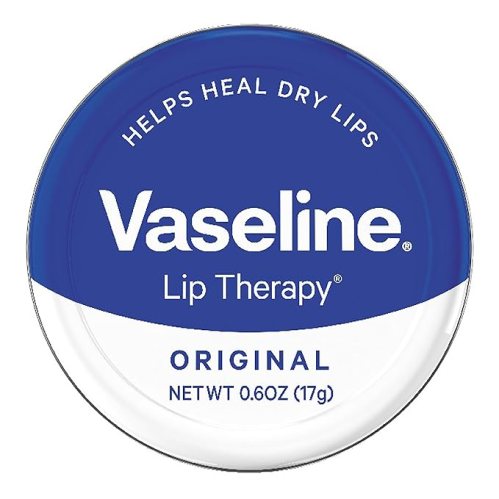
Best overall: Vaseline, Lip Therapy Balm — $6.00
Key ingredients: petrolatum, shea butter, vitamin E
Our overall best pick is the Lip Therapy Balm from Vaseline, a humble but ever-dependable beauty brand that is beloved by Dr. Greenfield, Dr. Nazarian., and Dr. Yadav. Like the classic Vaseline formula, it has a base of petroleum jelly, an occlusive and skin protectant to help offer moisture to dry lips while creating a seal on the skin, which is ideal for protecting parched kissers from losing that hydration. Shea butter and vitamin E round out the formula toimpart long-lasting hydration. We love thisbalm’s buildable formula (you can layer onas much as you like without it becoming goopy) and alcohol- and fragrance-free ingredients list, which makes it suitable for all skin types.
Scented? No (fragrance-free)
Shades: N/A
Available sizes: 0.6 oz.
Pros:
- Dermatologist-approved
- Provides long-lasting moisture
- Free of alcohol and fragrance
- Affordable
Con:
- Pot packaging isn’t as convenient as stick and tube formats
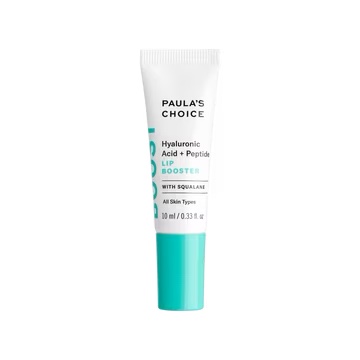
Runner-up: Paula’s Choice, Hyaluronic Acid + Peptide Lip Booster — $33.00
Key ingredients: hyaluronic acid, peptides, squalane
This lip product from Paula’s Choice is one of the pricier options on the list, but its potent combination of moisturizing ingredients makes it well worth it. “The hyaluronic acid draws in moisture, as does the squalane, and [it] improves hydration over time,” says Dr. Nazarian. It contains other beneficial ingredients as well, like lip-smoothening peptides and cocoa and shea butters for a punch of hydration. Since it’s an alcohol- and fragrance-free formula, it caters to sensitive skin, too. We also love its applicator tip, which delivers the product onto every inch of the lips and that it spreads with zero fuss.
Scented? No (fragrance-free)
Shades: N/A
Available sizes: 0.33 fl. oz.
Pros:
- Dermatologist-approved
- Provides and improves moisture
- Free of alcohol and fragrances
- Mess-free packaging
Con:
- Pricey
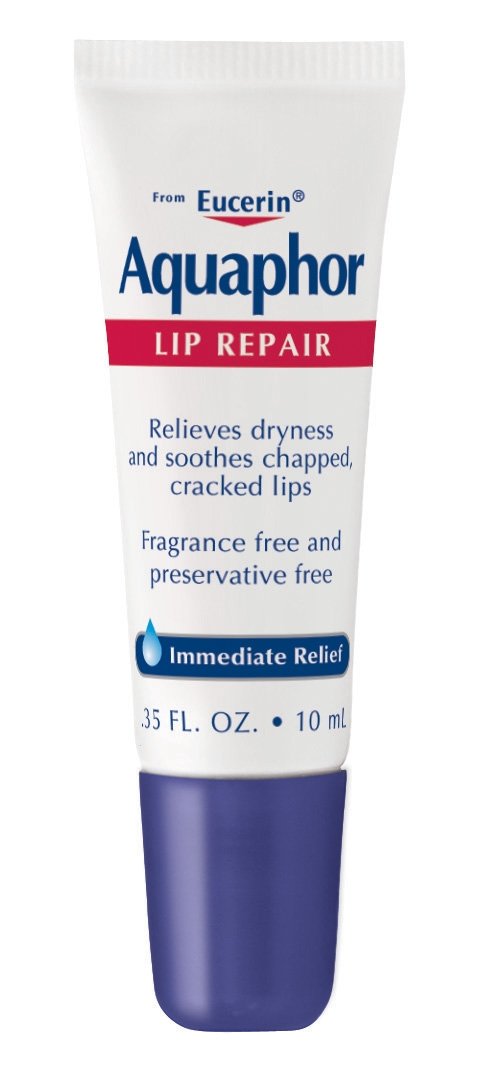
Best budget: Aquaphor, Lip Repair Ointment — $5.00
Key ingredients: petrolatum, shea butter, chamomile essence
The Aquaphor Lip Repair Ointment comes recommended by Dr. Nazarian thanks to its ingredients that moisturize and lock hydration into the lips. The petrolatum-based balm has a formula similar to that of the Aquaphor Healing Ointment, only it also contains shea butter to keep lips moisturized long after the first swipe, plus chamomile essence, which can soothe existing irritation. It skips out on alcohol and fragrances, too—something that folks with sensitive skin can appreciate. I personally use and love this product because it’s not toothick for daily use butnot too lightweight soas to be ineffective. (Just bear in mind that it leaves a slightly wax-y film on the lips). Best of all: It’s under $5.
Scented? No (fragrance-free)
Shades: N/A
Available sizes: 0.35 fl. oz.
Pros:
- Dermatologist-approved
- Moisturizes and soothes dry lips
- Free of alcohol and fragrances
- Mess-free packaging
- Affordable
Con:
- Leaves a waxy film on the lips

Best lightweight: La Roche-Posay, Cicaplast Lip Balm B5 — $7.00
Key ingredients: La Roche-Posay prebiotic thermal water, vitamin B5, shea butter
A moisturizing lip balm doesn’t have to be thick tobe effective—La Roche-Posay is proof of that. “The La Roche-Posay Cicaplast Lip Balm is a lighter formulation with shea butter and vegetable oil that feels smooth and creamy [on the lips] while also providing nourishing hydration,” says Dr. Greenfield. It also contains panthenol, or vitamin B5, an ingredient that works to draw moisture into the lips and lock it in, along with the brand’s unique thermal spring water, which is chock full of skin-soothing minerals. Just keep in mind that since it’s a lighter-weight formula, Dr. Greenfield notes that you will have to reapply it throughout the day.
Scented? No (fragrance-free)
Shades: N/A
Available sizes: 0.25 fl. oz.
Pros:
- Dermatologist-approved
- Lightweight but moisturizing formula
- Alcohol- and fragrance-free
- Mess-free packaging
- Affordable
Con:
- Requires reapplication throughout the day
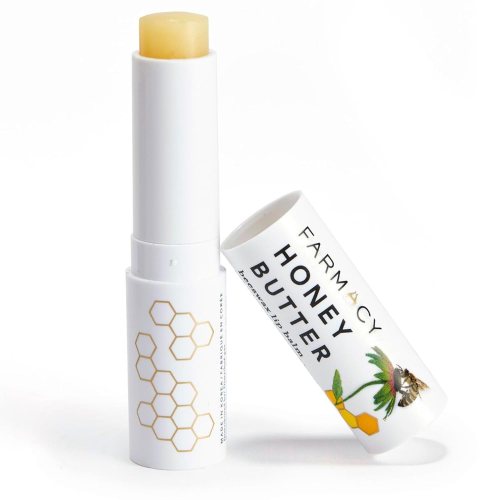
Best natural: Farmarcy, Honey Butter Beeswax Lip Balm — $12.00
Key ingredients: beeswax, proprietary honey blend, cupuaçu butter, cocoa butter
The Farmacy Honey Butter Beeswax Lip Balm is made with—surprise, surprise—beeswax, an ingredient that Dr. Nazarian is a fan for its ability to “seal in moisture.” Besides beeswax, the all-natural ingredients list also boasts honey to help attract moisture tothe lips, plus cupuaçu and cocoa butters to softenand smooth your pout. This pick is formulated with fragrant oils thatlend it a subtle citrusy scent, sokeep that in mind if you’re sensitive or allergic to fragrances. You can use it on bare lips, or as a moisturizing base if you plan on wearing otherlip products during the day—it layers beautifullyunderneath lipsticks, lip glosses, or even thicker lip balms.
Scented? Yes
Shades: N/A
Available sizes: 0.12 fl. oz.
Pros:
- Made with natural ingredients
- Provides and seals in moisture
- Wearable underneath other lip products
- Mess-free packaging
- Affordable
Con:
- Formulated with fragrance
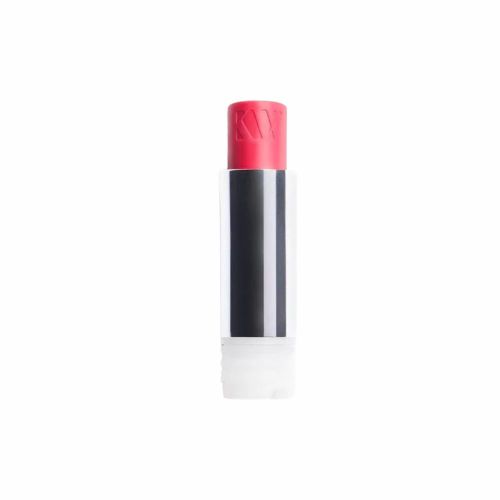
Best tinted: Kjaer Weis, Tinted Lip Balm — $35.00
Key ingredients: organic oils, hyaluronic acid, squalane
These tinted lip balms from Kjaer Weis are a favorite of W+G Commerce Editor Francesca Krempa, who says “they’re so soft and luscious on lips.” Made with hyaluronic and squalane, plus 10(!) moisturizing oils, including olive and Brazilian nut, the tinted lip balms promise to deliver akiss of long-lasting moisture, something to which she can attest.
“Kjaer Weis Tinted Lip Balms really last all day, quenching lips for literally hours on end,” she said, but what stole her heart were the subtle but gorgeous colors, which she proclaimed “give you that ‘your lips but better’ look.” Just keep inmind that this lip balm has fragrance, which might be unsuitable for those with a sensitivity or an allergy to added fragrances in cosmetics.
Read the full review of the Kjaer Weis Tinted Lip Balm here.
Scented? Yes
Shades: 6
Available sizes: 4 ml.
Pros:
- Provides long-lasting moisture
- Variety of shades
- Made with organic ingredients
- Mess-free packaging
- Refillable packaging
Con:
- Formulated with fragrance
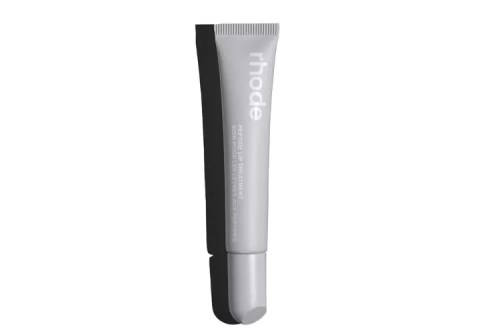
Best gloss: Rhode, Peptide Lip Treatment — $16.00
Key ingredients: shea butter, peptides, cupuaçu butter, babassu
If you like the look of intense shine, Rhode’s now-iconic Peptide Lip Treatment will makeyour lips looklike a glazed donut—the entire ethos behindHailey Beiber’s skin-care line. The formula is packed with ingredients that boost moisture and leave lips looking luminously smooth including shea butter for long-lasting moisture, peptides tofill in fine lines, cupuaçu butter topromote bounciness, and babassu, an ingredient thatsupports the overall skin microbiome and increases moisture levels over time. With continued use, you’re likely to see—and feel!—a marked difference in your lips, but theglossy sheen will undoubtedly provide you with instant gratification.
Scented? No
Shades: 4
Available sizes: 0.35 oz.
Pros:
- Super-shiny finish
- Unscented and scented varieties
- Multiple shades
- Mess-free packaging
Con:
- Limited shade options
- Stickier than traditional balms
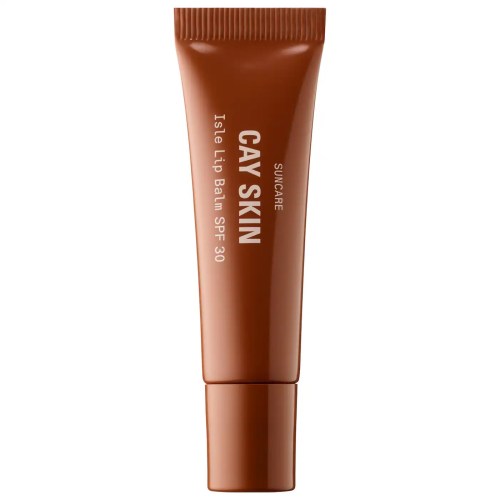
Best with SPF: Cay Skin, Isle Lip Balm — $15.00
Key ingredients: sea moss, aloe stem cells, vitamin E
If you spend a lot of time outdoors, you might want a lip balm withSPF—and the Cay Skin Isle Lip Balm will fit the bill. The W+G SPF Award Winner is formulated with SPF 30 to provide sun protection while a potent combination of ingredients—sea moss, aloe stem cells, and vitamin E—will deeply nourish and moisturize your pout. It comes in a clear version and three shades, Irie Rose, Bad Gyal Berry, and Nude Ting, all of which willimpart a shiny (but not sticky!) sheen on your lips. If anything, it’s important to note that it contains less than one percent of synthetic fragrance, which be a tradeoff for folks with particularly sensitive or dry skin.
Scented? Yes
Shades: 4
Available sizes: 0.35 oz.
Pros:
- SPF 30
- Multiple shades
- Luminous finish
- Mess-free packaging
Con:
- Formulated with fragrance
- Stickier than traditional balms
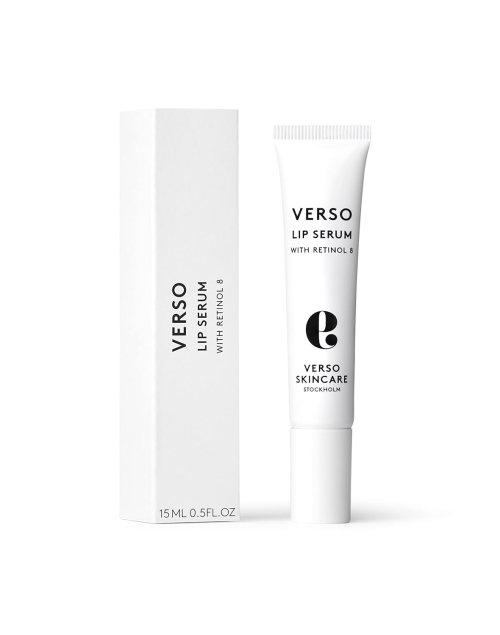
Best with retinol: Verso, Lip Serum — $65.00
Key ingredients: retinol 8, hyaluronic acid, peptides
There are a few reasons why double board-certified plastic surgeon Jaimie DeRosa, MD, recommends this retinol lip balm from Verso. “It’s made from a gentler retinol (retinol 8) and also contains nourishing and hydrating ingredients, including hyaluronic acid and peptides,” she says, the latter ofwhich will not only moisture dry lips but also offset the potential irritation caused by retinol. Over time, this lip product can help reduce pigmentation and slough off dead skin cells to reveal a softer and smoother pout—and, unlike most retinol for the face, you can use this lip product morning and night. The formula has a consistency similar to that of Vaseline, which means that it’s thicker and a little tackier than some other options.
Scented? Yes
Shades: N/A
Available sizes: 0.5 fl. oz.
Pros:
- Dermatologist-approved
- Uses a sensitive skin-friendly retinol
- Moisturizing ingredients offset potential irritation from retinol
- Mess-free packaging
Con:
- Formulated with fragrance
- Expensive

Best for eczema: Marin, Lip Treatment — $16.00
Key ingredients: marine glycoproteins
The Marin Lip Treatment adheres to the National Eczema Association’s ingredient guidelines, making it safe for anyone with eczema or atopic dermatitis. A favorite of Dr. Yadav, it soothesirritation, nourishes stressed skin, and replenishes the moisture barrier.
“The formula contains marine glycoproteins derived from lobster, which helps hydrate, soothe, and promote your skin’s natural regenerative process,” she says. And that’s not all: “It also contains squalane, coconut oil, and synthetic beeswax to condition, moisturize, and protect.” We love that it comes in a sizable tube (so it’ll last a while) and in an unscented option forpeople who are sensitive to fragrance. If you like scented products, it alsocomes in a Blueberry French Toast option. (Yum.)
Scented? Yes
Shades: N/A
Available sizes: 0.5 oz.
Pros:
- Dermatologist-approved
- Ingredients are ideal for sensitive skin
- Scented and unscented varieties
- Mess-free packaging
Con:
- Not for people with a shellfish allergy

Best overnight: Tatcha, Kissu Lip Mask — $29.00
Key ingredients: Japanese peach extract, Japanese camellia oil, squalane
Tatcha Kissu Lip Mask isn’t technically a lip balm, butwe’d be remiss not to mention it on this list. Ideal for folks looking tosupplement a daily lip balm ora deep dose of moisture, the formula works while you sleep, leaving youwith smoother, softer lips in the morning. With this hydrating formula, it’s loveat first swipe. If you do want to wear it during the day, it comes in a tinted version that kisses lips with a touch of purplish color. Better yet, the formula is fragrance-free tomake it suitable for even the most sensitive skin types.
Scented? No (fragrance-free)
Shades: 2
Available sizes: 0.32 oz.
Pros:
- Provides deep moisturization
- Made with occlusive ingredients
- Reduces flakiness
- Alcohol- and fragrance-free
Con:
- Stickier than traditional balms

Best lip balm alternative: Weleda, Skin Food Original Ultra-Rich Cream — $20.00
Key ingredients: gentle viola tricolor, calendula, chamomile, beeswax, almond oil
Board-certified dermatologist Shereene Idriss, MD, prefers using ointments to lip balms, and this option from Weleda is one she personally uses. “With lip balm, I found myself reapplying multiple times—and an excessive number of times a day. However, when I use the Weleda Skin Food in the morning, my lips stay hydrated for a significantly longer period,” she says. The formula boasts a combination of soothing calendula and chamomile, alongside beeswax and natural oils that serve to lock in moisture. Better yet, youcan use it onmore than just your lips—you can use the fragrance-free formula on elbows, and hands, feet.
Scented? No (fragrance-free)
Shades: N/A
Available sizes: 2.5 fl. oz.
Pros:
- Dermatologist-approved
- Provides long-lasting moisture
- Alcohol- and fragrance-free
- Multipurpose
Con:
- Packaging isn’t as travel-friendly as other options
- Not technically a lip balm
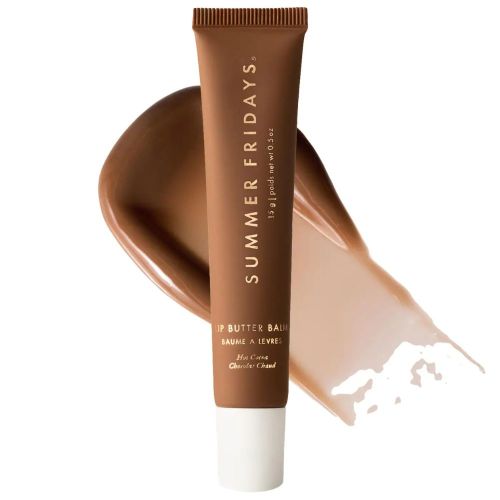
Summer Fridays Lip Butter Balm for Hydration & Shine — $26.00
If you want to enhance your lips, consider this lip balm from Summer Fridays, which is available in nine delicious colors. It hydrates your lips with nourishing ingredients like shea butter and murumuru seed butter, making it perfect for everyday use. You can also use it as an overnight treatment for added hydration.
Scented? Yes
Shades: 9
Available sizes: 0.5 Fl oz
Pros:
- Provides long-lasting hydration
- Non-sticky
Cons:
- Pricey

Naturium Phyto-Glow Lip Balm Clear — $10.00
This lip balm features a tinted formula enriched with plant squalane and shea butter to moisturize and add shine to your lips. It comes in 18 shades so you have options, but the clear formula is also great to keep in your bag to reapply in the colder months.
Scented? Yes
Shades: 18
Available sizes: 0.5 Fl oz
Pros:
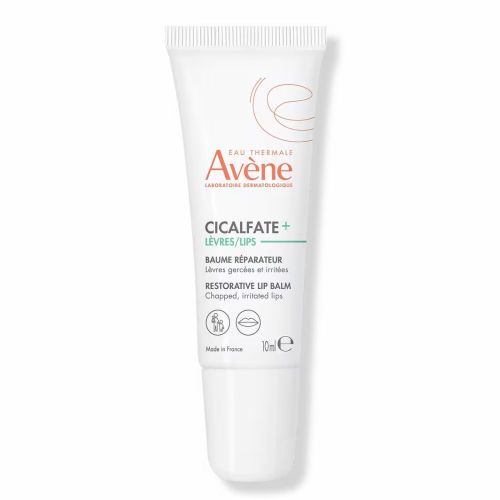
Avène Cicalfate Lips Restorative Lip Cream — $18.00
Those who have sensitive lips can truly benefit from using this lip cream. The balm is dermatologist-tested and has beeswax, glycerin, and shea oil to hydrate your lips. Plus, this is also unflavored and unscented, making it a solid option for sensitive skin.
Scented? No
Shades: 0
Available sizes: 0.35 fl oz
Pros:
- Works for sensitive lips
- No flavor
- Thick formula
Cons:
- Might be hard to blend in
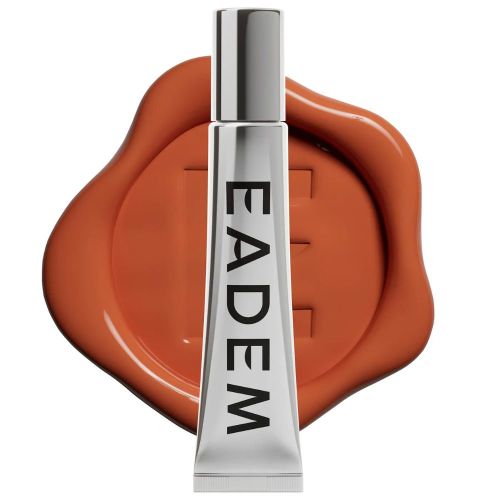
Eadem Le Chouchou Exfoliating + Softening Peptide Lip Balm — $24.00
If you’re trying to eliminate flakes on your lips, the Eadem peptide lip balm can be a great solution. Formulated with hibiscus enzymes and lactic acid, it helps to gently remove dead skin while combatting dryness.
Scented? No
Shades: 5
Available sizes: 0.49 fl oz
Pros:
- Gently exfoliates your lips
- Non-sticky
Cons:
- Contains AHA’s, which may irritate sensitive skin
FAQS
What is the best treatment for very dry lips?
Many home remedies for dry, chapped lips will quench a parched kisser, like making sure to drink plenty of water or applying common pantry staples like honey or coconut oil to your pout. Exfoliation can also help, says Dr. Idriss, which is part of her “lip blasting” technique. The two-step technique first involves exfoliating the lips with a 5-10 percent glycolic acid (or if you have sensitive skin, mandelic acid), and then once fully absorbed, slathering on a thick layer of ointment. If anything, she warns that you’ll want to avoid the first step altogether if you have a history of cold sores or an active irritation. Of course, there is also lip balm, which can help to prevent dry lips in the first place, so long as you’re using one that’s made with the right ingredients.
If, despite your best efforts, your lips are still dry, you might want to speak to your dermatologist to determine whether it’s caused by an underlying issue.
Is it OK to put lip balm every day?
The short answer is yes. “It’s not bad to apply lip balm throughout the day,” says Dr. Nazarian. “There’s no such thing as a lip balm ‘overdose’ as long as the lip balm doesn’t contain irritating ingredients and as long as it contains an occlusive ingredient to prevent moisture loss.”
Sign up for the Well+Good SHOP Newsletter
Get exclusive deals on wellness, beauty, fitness, and food products that have been hand-picked by our editors.
Got it, you've been added to our email list.
